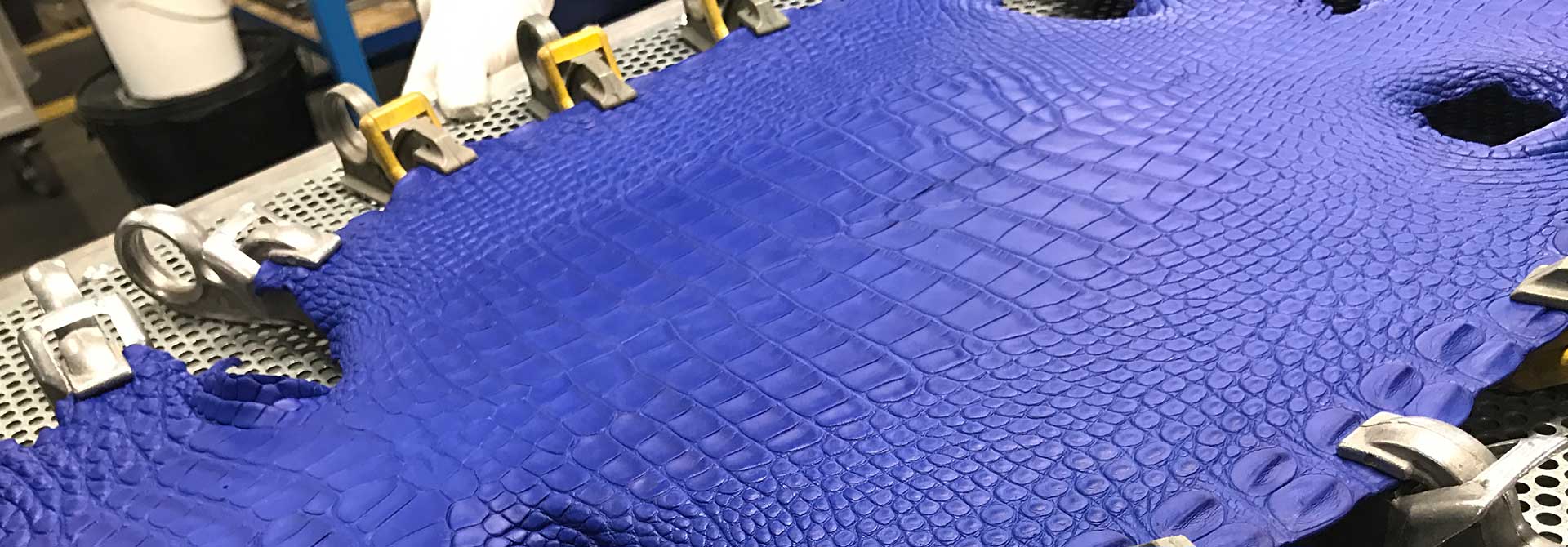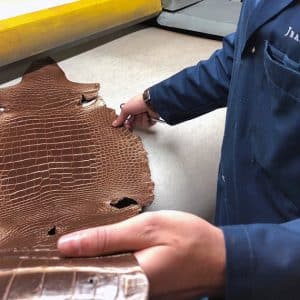
Owning our tannery: what difference does it make?
by Anaïs Bordier
When my father took over the manufacture, he started back the activity of the tannery. In Jean Rousseau’s philosophy, it was key to be not only a fine leather good manufacturer but a “service company” as well. Owning our tannery also allowed us to ensure our independence and an optimal traceability both to our individual customers and our B2B partners. Last but not least, it gave us total control over the quality of our products. Today, a dozen people from 7 different professions run the tannery: managers, colorists, people in charge of skin coloration in wet and dry environments and of course our specialists in reptile, calf and goat skins.
The role of the tannery is essential. From the start, it is involved in our material research and in finding the right process to work on skins. Depending on the kind of skin, we indeed intervene at different stages. With an alligator skin for instance, we almost start from zero. It is like a white canvas. What we receive is just an alligator crust. It has to go to a wet environment, then in a fulling mill in which we add pigments to give it a tint. Then the skin is put to dry before it accesses the workmanship: mat or shiny aspect, faded vintage effect done by hand, etc.
Having our own tannery allows us to be more creative and also closer to our clients’ desires. For example, we can provide a client with any specific tint: there are more than 350 colors for alligator products. In 2017, we set up an ephemeral pop-up store in the Japanese Hankyu Men’s department store of Osaka where we presented a limited edition of a vintage blue alligator zipped wallet entirely handmade and specially created for the occasion. This collection was also presented in our Tokyo’s corner.
Owning our tannery is not only rare in a business of our size, it is a real plus. Our requirement level is very high so we need to be able to test the leather and keep a total control over the quality of our products. This participates to our pride and is another illustration of our valuing the work and know-hows of our craftsmen.

